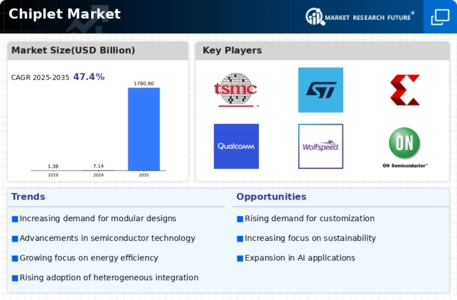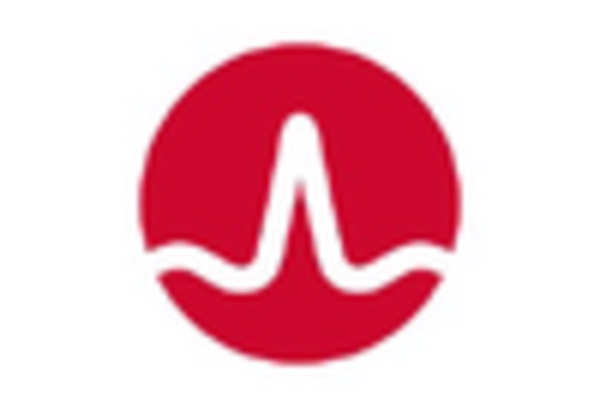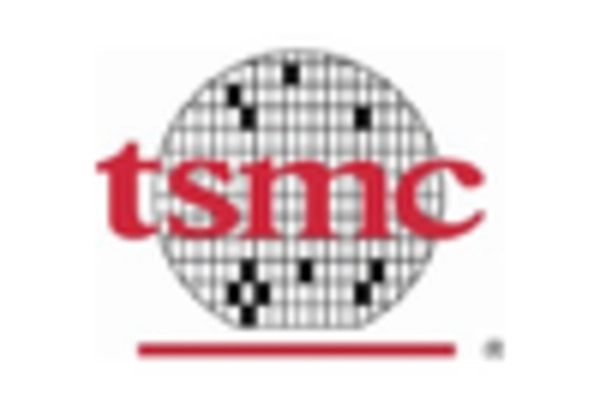The Chiplet Market is currently characterized by a dynamic competitive landscape, driven by rapid technological advancements and increasing demand for high-performance computing solutions. Major players such as Intel (US), AMD (US), and TSMC (TW) are at the forefront, each adopting distinct strategies to enhance their market positioning. Intel (US) has focused on innovation through its recent investments in advanced packaging technologies, which aim to improve chip performance and efficiency. Meanwhile, AMD (US) continues to leverage its stronghold in the gaming and data center segments, emphasizing the integration of chiplet architectures to optimize performance and reduce costs. TSMC (TW), as a leading foundry, is enhancing its capabilities in chiplet manufacturing, thereby solidifying its role as a critical partner for many semiconductor companies. Collectively, these strategies indicate a trend towards specialization and collaboration, shaping a competitive environment that prioritizes technological advancement and operational efficiency.
In terms of business tactics, companies are increasingly localizing manufacturing and optimizing supply chains to mitigate risks and enhance responsiveness to market demands. The Chiplet Market appears moderately fragmented, with a mix of established players and emerging firms vying for market share. The collective influence of key players is significant, as their strategic decisions often set industry standards and drive innovation across the sector.
In September 2025, Intel (US) announced a strategic partnership with a leading AI firm to develop next-generation chiplet designs tailored for artificial intelligence applications. This collaboration is poised to enhance Intel's competitive edge in the AI space, allowing for the integration of advanced processing capabilities that cater to the growing demand for AI-driven solutions. The strategic importance of this move lies in Intel's ability to leverage AI technologies to optimize chip performance, thereby addressing the evolving needs of its customer base.
In August 2025, AMD (US) unveiled its latest chiplet architecture, which is designed to significantly improve power efficiency and processing speed for data centers. This innovation not only reinforces AMD's commitment to performance but also positions the company as a formidable competitor against traditional rivals. The introduction of this architecture is crucial, as it aligns with the industry's shift towards energy-efficient computing solutions, responding to both market demands and sustainability goals.
In July 2025, TSMC (TW) expanded its chiplet manufacturing capabilities by investing in new fabrication facilities in Taiwan. This expansion is expected to enhance TSMC's production capacity and technological prowess, enabling it to meet the increasing demand for advanced semiconductor solutions. The strategic importance of this investment lies in TSMC's ability to maintain its leadership position in the foundry market, ensuring that it can support its partners with cutting-edge manufacturing technologies.
As of October 2025, the Chiplet Market is witnessing trends that emphasize digitalization, sustainability, and the integration of artificial intelligence. Strategic alliances among key players are increasingly shaping the competitive landscape, fostering innovation and collaboration. Looking ahead, it is likely that competitive differentiation will evolve, with a pronounced shift from price-based competition to a focus on innovation, technological advancements, and supply chain reliability. This evolution suggests that companies that prioritize these aspects will be better positioned to thrive in the increasingly complex and competitive Chiplet Market.

















Leave a Comment